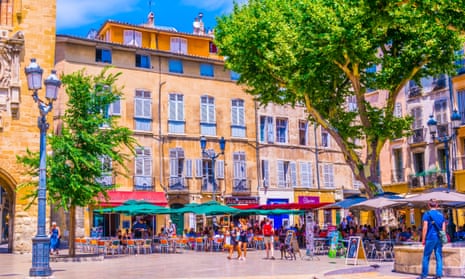A slice of Parisian chic in the south of France, Aix-en-Provence is an idyllic place to while away an autumn weekend. In July and August, the Roman boulevards bake – the heat here is more intense than coastal Marseille just 30km away – and the rows of elegant plane trees along the Cours Mirabeau offer little respite. But come in November or early spring and the place is lively, thanks to a university population of 80,000, and the cafés and restaurants in its many leafy squares are vibrant and busy. The weather is crisper and fresher, too, meaning there’s more to do and less excuse not to try out the many walking and hiking trails around the town, including Mont Sainte-Victoire, the craggy peak that rises to 3,300ft to the east of the city.
Sainte-Victoire has iconic status in Aix. It’s almost inseparable from the work of Paul Cézanne, who painted its pitted grey angles more than 80 times. His style evolving from impressionism to something else altogether. The bold geometric shapes and abstract lines that came out of these compositions would inspire Picasso, earning Cézanne the title of founding father of modern art.

Cézanne’s view of the world defines the landscape around Aix – each aspect reflecting back his paintings wherever you choose to look. The Terrain des Peintres, a 10-minute walk from the city centre, is where he often studied his favourite subject and as well as stunning views of the peak there are several reproductions of his paintings to show how his work progressed. Nearby you can visit his old studio, the Atelier des Lauves. It’s easy to see why he spent so much time here. It’s a gorgeous space that he built himself, surrounded by trees and with light flowing in through floor-to-ceiling windows. It was here that he produced some of his most famous pieces, including The Bathers and many of his studies of Mont Sainte-Victoire, working ceaselessly until his death in 1906 – yet it feels as if he’s only just stepped away. His coat and hats remain, along with the same china vases and bowls that appeared in his still lifes, as well as his brushes and paints.
All this should be inspiration enough to take in the new Cézanne retrospective at Tate Modern, which is running until March, where you can see about 80 of his works, 20 which have never been on display in the UK before.
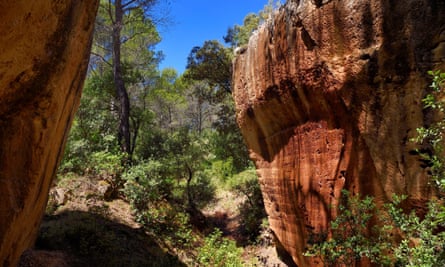
But there is much more to enjoy about Aix beyond its most famous resident. Its chic shopping streets off Cours Mirabeau for a start, lined with fashionable boutiques. A browse in Sézane (no relation!), the clothing brand from Paris that has reached our shores, is pure pleasure after a walk around the Musée Granet. As is lunch at La Fromagerie du Passage, tucked away down a tiny street, where you can enjoy a platter of delicious cheeses with a glass or two of chilled rosé.
There are many reasonably priced hotels in the heart of Aix – the Grande Hôtel Roi René is just five minutes’ walk from Cours Mirabeau; its main attraction is the prettily designed pastel-pink courtyard with balconies that overlook a fancy pool.
If you do crave one last Cézanne fix, make it a guided visit to the overgrown quarries known as Bibémus to the east of Aix. This wild outpost of jagged rocks scorched yellow and orange in the sun are so literally rendered in the artist’s work, it’s almost as if no cubist vision was required – he simply painted what he saw. Walk to the quarry’s edge for a sweeping view of Provence’s countryside – endless pine trees under a cobalt sky – spread out below you. Then it’s time to scuttle back to civilisation: an apéritif at Le Grillon, a classic brasserie dripping in gilt and chandeliers, and serving the best steak and pomme frites in town.
Three more French towns that inspired famous artists
Albi: Toulouse-Lautrec
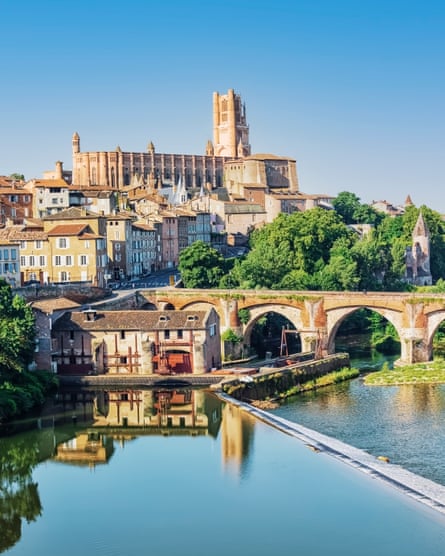
The pretty medieval city of Albi was Henri de Toulouse-Lautrec’s birthplace, and in the Palais de la Berbie museum you can enjoy the largest collection of his work – from his intimate portraits of dancehall performers to the bold iconic theatre posters that still seem so modern. Nearby is the classic French restaurant Le Lautrec, minutes from where he was born and still serving the tartouillat aux pommes et armagnac, made to his own recipe.
Arles: Van Gogh
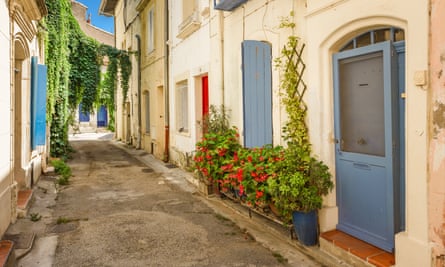
On the bank of the river Rhône, Arles is a delightful city of cobbled streets and elegant squares. Van Gogh lived here for more than a year, drawn by the soft light and vibrant colours of Provence, and created hundreds of works, including some of his greatest paintings. As well as the Fondation Vincent van Gogh, dedicated to promoting the artist’s work, there’s a world-famous photography festival, Les Rencontres d’Arles, transforming this small city into an international hub.
Collioure: Matisse
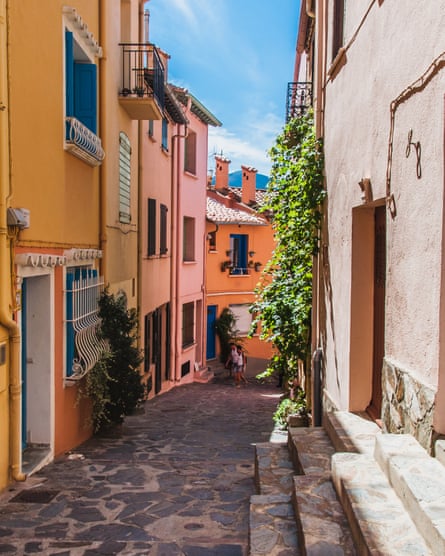
South of Perpignan and close to Spain, Collioure has a pretty pastel harbour nestling in vine-covered hills and close to sandy beaches. Matisse arrived here in 1905 and made the bright colours and luminous light of this landscape his own – in particular his famous work, Open Window, Collioure, which is celebrated as a masterpiece of early modernism, paving the way for the fauve school of artists.
Cézanne at Tate Modern runs until 12 March 2023 (tate.org.uk). For more information about Aix and Cézanne, go to aixenprovencetourism.com and cezanne-en-provence.com. Rooms at Grand Hôtel Roi René start at £130 (all.accor.com)
